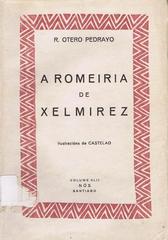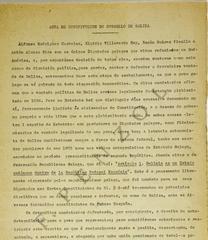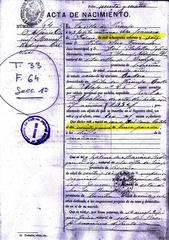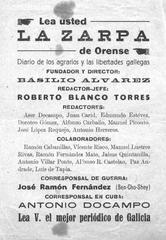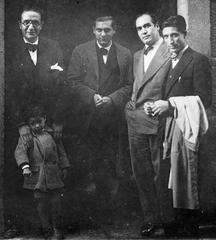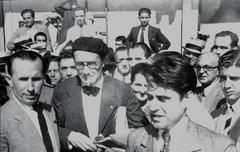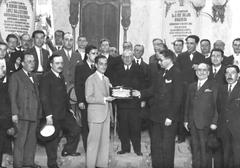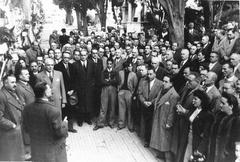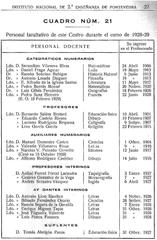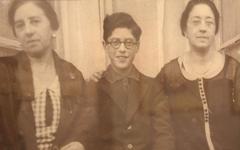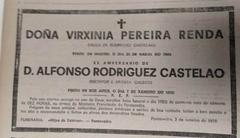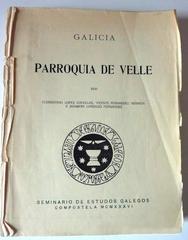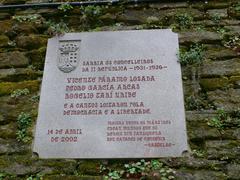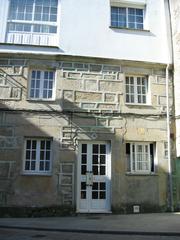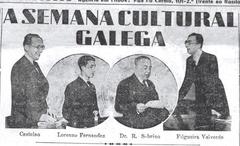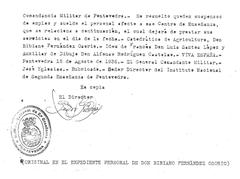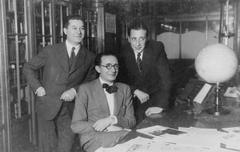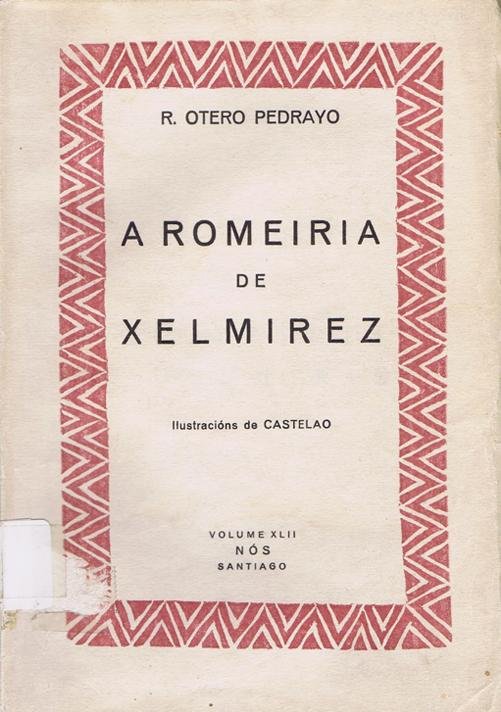
Alfonso Daniel Rodríguez Castelao: Visiting Hours, Tickets, and Historical Significance in Buenos Aires
Date: 14/06/2025
Introduction
Alfonso Daniel Rodríguez Castelao (1886–1950) is celebrated as the father of modern Galician nationalism, an emblematic writer, artist, and political leader whose influence extends well beyond Galicia, particularly due to his exile years in Buenos Aires, Argentina. Today, Buenos Aires honors Castelao’s memory through monuments, cultural centers, and commemorative events that speak to the enduring bonds between Galicia and its diaspora. This detailed guide will help you explore the city’s Castelao-related landmarks, providing everything you need—from historical context and visiting hours to travel tips and event highlights—to ensure a meaningful visit.
Whether you are a history enthusiast, an art lover, or part of the Galician diaspora, Buenos Aires offers an immersive cultural experience rooted in Castelao’s legacy. For additional background and the latest cultural updates, consult resources such as plazasdebuenosaires.com, buenosaireshistoria.org, and academia.gal.
Historical Background of the Castelao Monument
The Castelao Monument in Buenos Aires stands in Plaza Alfonso R. Castelao, Villa Crespo, as a powerful testament to Castelao’s lasting impact on Galician culture and the Spanish exile community. Forced to leave Spain after the Civil War, Castelao’s years in Argentina were marked by prolific artistic and political work that strengthened Galician identity abroad (Wikipedia, buenosaireshistoria.org).
Commissioned by Buenos Aires’ Galician community, the monument was sculpted by José Fioravanti and unveiled as both an homage to Castelao’s multifaceted legacy and a symbol of resilience against oppression (plazasdebuenosaires.com).
Description and Artistic Features
Located in a tranquil green plaza, the bronze half-body statue of Castelao depicts him with notebook and pencil—an apt representation of his dual talents. The sculpture sits atop a red granite base inscribed with a dedication from the Galician community. Fioravanti’s work captures Castelao’s thoughtful presence, and the use of durable materials ensures the monument’s lasting significance (plazasdebuenosaires.com).

Cultural and Political Significance
For the Galician diaspora in Buenos Aires, the monument is a locus of memory and identity. Castelao’s exile writings, including the renowned “Alba de Gloria” address, inspired generations of Galicians and democratic activists. The monument continues to serve as the focal point for commemorations, particularly on January 7 (Castelao’s death anniversary) and July 25 (Galician National Day), drawing crowds for speeches, music, and cultural reflection (academia.gal, eldiario.es).
Location, Visiting Hours & Accessibility
- Address: Plaza Alfonso R. Castelao, Villa Crespo, Buenos Aires
- Open: 24/7, year-round
- Admission: Free
- Accessibility: Wheelchair-accessible, with landscaped paths, benches, and shaded areas
The plaza is easily reached by public transport—close to the “Independencia” station (C subway line) and bus routes. While safe during the day, standard urban precautions are advised after dark (plazasdebuenosaires.com).
Practical Tips for Visitors
- Best Time to Visit: Early morning or late afternoon, especially in summer months.
- Event Highlights: Attend commemorations on January 7 or July 25 for a unique community experience (academia.gal).
- Photography: The site offers excellent photo opportunities, especially under natural light.
- Nearby Attractions: Villa Crespo’s proximity to Palermo, San Telmo, and Almagro allows for a diverse and rewarding itinerary (touristsecrets.com).
Additional Features of Plaza Alfonso R. Castelao
The plaza also features commemorative plaques, including one marking the founding of Club Atlético Atlanta, and offers recreational areas for families. Its design balances reflection and community engagement (plazasdebuenosaires.com).
Castelao’s Legacy and Cultural Institutions in Buenos Aires
Castelao’s influence permeates Buenos Aires’ Galician institutions, such as Centro Galicia and Centro Gallego, which host exhibitions, lectures, and archives dedicated to Galician culture and Castelao’s legacy (buenosaireshistoria.org). These centers act as vibrant bridges between Galicia and Argentina, fostering a sense of shared history and cultural pride.
Visiting Castelao-Related Sites in Buenos Aires
Centro Galicia
- Location: Avenida Belgrano, city center
- Hours: Mon–Fri, 10:00–18:00
- Entry: Free
- Accessibility: Yes
Centro Galicia hosts exhibitions, commemorative events, and a library of rare Castelao works. It was also the site of Castelao’s 1950 funeral, which was a major event for the local community.
Instituto Santiago Apóstol
- Hours: Tue–Sat, 9:00–17:00
- Entry: Free
- Accessibility: Yes
This institution regularly features exhibitions, lectures, and classes on Castelao’s artistic and literary contributions.
Centro Cultural del Partido de La Estrada
- Hours: Vary by event; check the official site
- Entry: Event-based
This venue frequently hosts art exhibitions and community gatherings focused on Castelao’s legacy.
Guided Tours and Walking Routes
Guided walking tours, often available seasonally, connect Castelao’s key Buenos Aires sites—including Centro Galicia, venues of historical speeches, and cultural institutions. Tours are typically two hours and can be booked through local organizations or the Audiala app.
Annual and Special Events
2025 marks the 75th anniversary of Castelao’s death, with events including conferences, art exhibitions, theatrical performances, and workshops. Major Galician institutions in Buenos Aires will serve as event hubs (historiadegalicia.gal).
Practical Visitor Information
- Public Transport: Buenos Aires’ subway (Subte) and bus networks provide convenient access to all Castelao sites.
- Language: Most events are in Spanish, with some Galician language and occasional English support.
- Accessibility: Major venues are wheelchair accessible; however, older buildings and some cemetery areas may have limitations.
Frequently Asked Questions (FAQ)
Q: Is there an admission fee to visit Castelao sites?
A: The monument and most cultural centers are free; special events may have a nominal ticket price.
Q: Are guided tours available?
A: Yes, both general and group tours are offered; English-speaking guides may be available with advance booking.
Q: What are the best times to visit?
A: Weekdays during opening hours, or during commemorative events for a richer experience.
Q: Is public transport available?
A: All main sites are accessible via Buenos Aires’ extensive public transportation network.
Suggested Itinerary for Castelao Enthusiasts
- Morning: Visit Castelao’s grave at Cementerio de la Chacarita (7:00–17:00)
- Midday: Explore Centro Galicia’s exhibitions and library (10:00–18:00)
- Afternoon: Visit Federación de Asociaciones Gallegas’ museum (9:00–17:00)
- Evening: Attend a performance or reading at Teatro Avenida (check schedule)
Enhance Your Visit
- Download the Audiala app for guided tours, event notifications, and additional multimedia resources.
- Visit bookstores like Librería Hernández or Librería Norte for Castelao’s works and memorabilia.
- Explore online virtual tours and interactive maps for planning.
Conclusion
Buenos Aires is a living archive of Castelao’s legacy, offering visitors a rare opportunity to experience Galician culture in exile. From the evocative monument in Plaza Alfonso R. Castelao to dynamic cultural centers and annual commemorations, the city invites you to engage with a narrative of resilience, identity, and art that continues to inspire.
Stay updated on Castelao events and Buenos Aires cultural highlights by downloading the Audiala app and following our social media channels.
Official Sources and Further Reading
- Visiting the Castelao Monument in Buenos Aires: History, Hours & Travel Tips
- Alfonso Daniel Rodríguez Castelao and his Galicia Ideal in Buenos Aires: Emigration, Exile and Utopia
- Año Castelao 2025: Tribute at the Pantheon in Santiago
- Castelao’s Biography. Secretaría Xeral da Emigración
- Así era Castelao: From Cultural Galicianism to the Politics of Exile
- Castelao e Bos Aires Exhibition. MARCO Vigo
- Mil caras de un polifacético Castelao: Artist and founder of modern Galician nationalism
- 15 Must-See Landmarks in Buenos Aires, Argentina. Tourist Secrets
